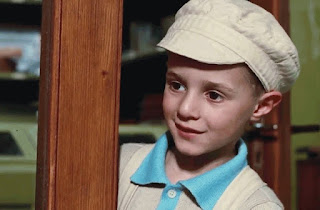Triple Oscar winner among best in movie history
 |
| Vittorio Storaro has won three Oscars as one of film's greatest cinematographers |
Storaro won Oscars for Best Cinematography for Francis Ford Coppola’s 1979 Vietnam War epic Apocalypse Now, for the Warren Beatty-directed historical drama Reds in 1981, and for The Last Emperor, Bernardo Bertolucci’s story of imperial China, in 1987.
Described as someone for whom cinematography was “not just art and technique but a philosophy as well”, Storaro worked extensively with Bertolucci, for whom he shot the controversial Last Tango in Paris and the extraordinary five-hour epic drama 1900.
He filmed many stories for his cousin, Luigi Bazzoni, collaborated with Coppola on three other movies and recently has worked with Woody Allen, whose latest picture, A Rainy Day in New York, is due to be released next month.
Storaro inherited his love of the cinema from his father, who was a projectionist at the Lux Film Studio, which was based in Rome from 1940 having been established in Turin by the anti-Fascist businessman Riccardo Gualino in 1934.
 |
| Storaro at the Portuguese Academy in 2017 to receive a lifetime achievement award |
When Storaro enrolled at age of 18, he was one of the youngest students in the centre’s history.
Soon finding work as a camera operator, Storaro drew inspiration from visiting art galleries and studying the works of great painters, which helped him understand how light and darkness could be used to create different effects.
It is said that his philosophy is largely based by the 18th century German writer Johann Wolfgang von Goethe's theory of colours, which explores the psychological effects created by different colours have and the way in which colours influence our perceptions of different situations.
He worked as as an assistant cameraman on Before the Revolution (1964), one of the first films directed by Bertolucci. His long collaboration with Bertolucci began to develop when he was credited as cinematographer on The Spider's Stratagem in 1970.
 |
| Bernardo Bertolucci worked with Storaro on several films |
His collaboration with Beatty generated another Oscar nomination, for Dick Tracy in 1990.
Storaro worked outside Italy for the first time on Apocalypse Now (1979), for which director Coppola gave him free rein on the film's visual look.
He had at first been reluctant to take on the assignment because he considered Gordon Willis to be Coppola's cinematographer, but Coppola wanted him, having been impressed by Storaro’s filming of the star of Apocalypse Now, Marlon Brando, in Last Tango in Paris.
Some great moments of in late 20th century cinema resulted from their collaboration. They would work together again on One from the Heart (1981) and Tucker: The Man and His Dream (1988) and the Life without Zoe segment of New York Stories (1989).
In addition to his three Oscars, Storaro won a BAFTA for Best Cinematography for Bertolucci’s The Sheltering Sky (1990), as well as a Primetime Emmy Award, a Goya Award, and a David di Donatello Silver Ribbon Award, in addition to numerous lifetime achievement honours from various film organizations, including, in 2017, the George Eastman Award for distinguished contribution to the art of film.
With his son Fabrizio, he created the Univisium format system to unify all future theatrical and television movies into one respective aspect ratio of 2:1. His first work with the format was the television science fiction mini-series Dune in 2000.
 |
| The Cinecittà studios in Rome are the largest in Europe |
Cinecittà in Rome is the largest film studio in Europe, spreading over an area of 100 acres with 22 stages and 300 dressing rooms. Situated six miles south of the city centre, it is the hub of the Italian film industry. Built during the Fascist era under the personal direction of Benito Mussolini and his son, Vittorio, the studios were bombed by the Allies in the Second World War but were rebuilt and used again in the 1950s for large productions, such as Ben Hur. These days a range of productions, from television drama to music videos, are filmed there.
 |
| The Palazzo del Podestà in Parma |
Much of the location shooting for 1900, the colossal movie Storaro shot for Bernardo Bertolucci, took place in Parma, the historic city in the Emilia-Romagna region, famous for its Prosciutto di Parma ham and Parmigiano Reggiano cheese, the true ‘parmesan’. In 1545 the city was given as a duchy to the illegitimate son of Pope Paul III, whose descendants ruled Parma till 1731. The composer, Verdi, was born near Parma at Bussetto and the city has a prestigious opera house, the Teatro Regio.
More reading:
Why Last Tango in Paris caused outrage
Francesco Rosi and the birth of neorealism
Luchino Visconti, the aristocrat of Italian cinema
Also on this day:
1866: Austria defeats Italy at the Battle of Custoza
1859: Italy sees off the French at the Battle of Solferino
1993: The birth of Piero Barone, tenor with Il Volo
Home


